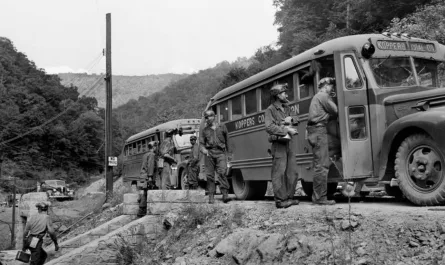In the heart of Minnesota’s dense pine forests in 1913, the Scott and Graff Lumber Company buzzed with the raw energy of lumberjacks toiling through long, grueling days. Amid the rhythmic chop of axes and the creak of falling timber, one moment stood out as sacred: the midday meal. This daily ritual, set at a scheduled hour, was more than a break—it was a lifeline for men battling the cold and the relentless demands of the logging trade.

The Lumberjack Life: Grit and Gritty Conditions
Picture a crisp Minnesota winter in 1913, where temperatures could plummet below zero. Lumberjacks at Scott and Graff faced brutal conditions, felling towering pines with hand tools and hauling logs across snow-packed trails. The work demanded immense strength, with 10- to 12-hour shifts in remote camps far from civilization. Frostbite was a constant threat, and the risk of injury from falling trees or sharp blades loomed large. These men—often a mix of Scandinavian immigrants, French Canadians, and native-born Americans—were the backbone of Minnesota’s booming timber industry, which fueled America’s growing cities and railroads.
In this harsh world, mealtime was a beacon of relief. The cookhouse, warmed by a roaring woodstove, offered a brief escape from the biting cold and a chance to refuel for the labor ahead.
The Meal: Fuel for the Forest
Lumberjack meals were engineered for endurance, packing enough calories to sustain men burning 4,000–6,000 calories a day. The spread was hearty, practical, and built to warm both body and soul:
-
Meat: Heaping portions of beef, pork, or venison, often served as stews or fried cuts. Salt pork and bacon were staples, their long shelf life ideal for camps without refrigeration.
-
Potatoes: Boiled, mashed, or fried, these were a cheap, calorie-dense cornerstone of the meal, often slathered in gravy.
-
Bread: Thick slices of fresh-baked bread or biscuits, sometimes paired with butter or molasses, filled hungry bellies. Pancakes, stacked high, were another camp favorite.
-
Beans: Baked beans, flavored with pork fat or molasses, delivered slow-burning energy.
-
Coffee or Tea: Piping-hot coffee, brewed strong and served in tin mugs, was a lumberjack’s best friend, chasing away the chill and boosting morale. Tea was a close second for those who preferred it.
-
Desserts: When available, pies or doughnuts made with dried apples or raisins added a touch of sweetness to the meal.
Served family-style on long wooden tables, these meals were devoured quickly. Some camps enforced a “no talking” rule to keep things efficient, though the clatter of tin plates and the aroma of sizzling meat filled the air with life.
The Cookhouse: Heart of the Camp
The cookhouse was the camp’s heartbeat, where a skilled cook and their crew wielded as much influence as the foreman. A good cook could keep a camp happy; a bad one might spark a mutiny, with lumberjacks abandoning ship for better fare elsewhere. Meals were prepared in massive quantities, with cooks rising before dawn to bake bread, simmer stews, and keep the coffee pot boiling. The warmth of the cookhouse, coupled with the promise of food, drew men together, fostering a rough camaraderie despite the diverse backgrounds of the crew.
A Moment of Respite
The lunch break was more than a meal—it was a pause in a relentless day. Lumberjacks, bundled in wool flannel and heavy boots, would stomp off the snow and gather around the tables, their faces weathered but spirits lifted by the prospect of food. For a brief hour, the forest’s dangers and the cold faded into the background. Stories might slip out, a rare laugh breaking the silence, though most ate with focus, knowing the afternoon’s labor waited.
The Legacy of Minnesota’s Lumberjacks
This scene from 1913 captures the essence of lumberjack life—a blend of brute strength, resilience, and small moments of human connection. Minnesota’s logging industry shaped the state’s economy and landscape, though overlogging would soon thin its forests. The lumberjacks of Scott and Graff, like their real-life counterparts at companies such as Pillsbury or Virginia and Rainy Lake, became legends, their toughness woven into America’s frontier mythos.
The midday meal was a microcosm of their world: practical, communal, and vital. It fueled not just their bodies but the spirit of an era when men carved a living from the wild, one tree—and one plate—at a time.
Interested in learning more about Minnesota’s logging history or the daily grind of lumberjack life? Let me know, and I’ll dig deeper!


